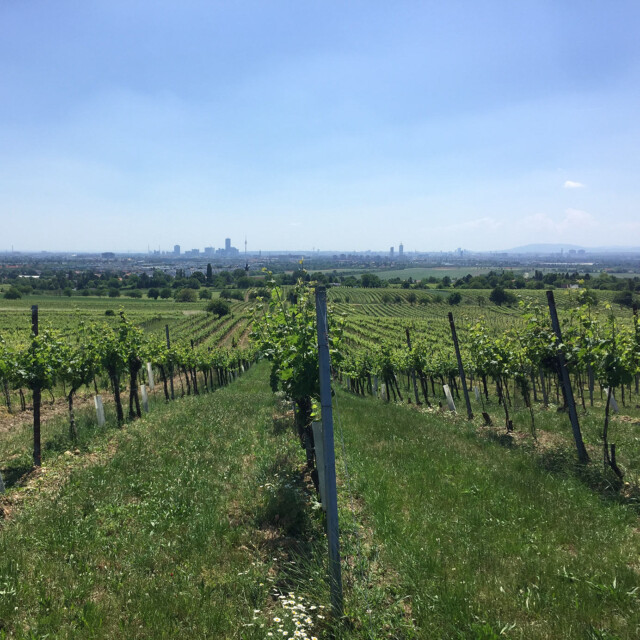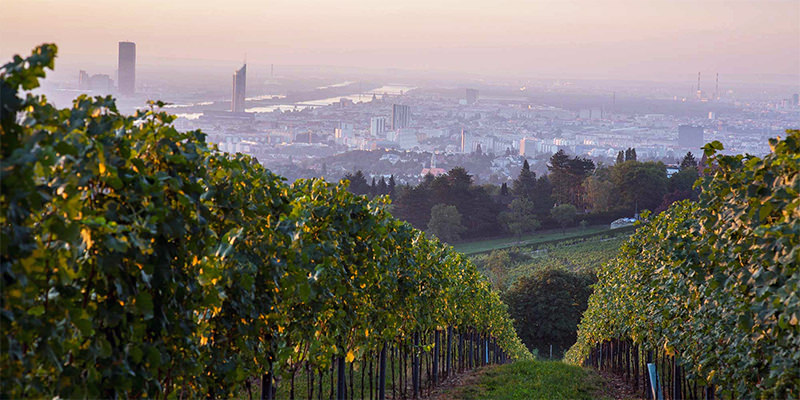If you’re at all familiar with Roman history, then you know that as the Empire spread into modern-day France, Spain, Germany and beyond, in addition to bringing commerce and plumbing, the Romans made a habit of planting grapevines wherever they lingered. Many of those places turned into trading posts and provincial capitals, which evolved – over two millennia, through both good times and bad – into Europe’s leading cities. As recently as three centuries ago, if you wandered around the edges of most of these great cities you would have no trouble finding thriving local vineyards.
Today an urban vineyard within the borders of a European capital (or one on any other continent for that matter) is likely an historical anomaly; otherwise it’s the effort of a determined group of individuals to either reclaim a long-lost tradition or to spark a new one. That is unless you’re in Vienna, the capital of Austria. 612 hectares of vineyards – a bit less than 10% of the entire island of Manhattan – ring the heart of Vienna. Together these vineyards are Austria’s youngest recognized winegrowing region. How this happened is a combination of luck, history, capitalist-fueled-civic pride, a royal decree, and well-ahead-of-their-time urban land-use policies.
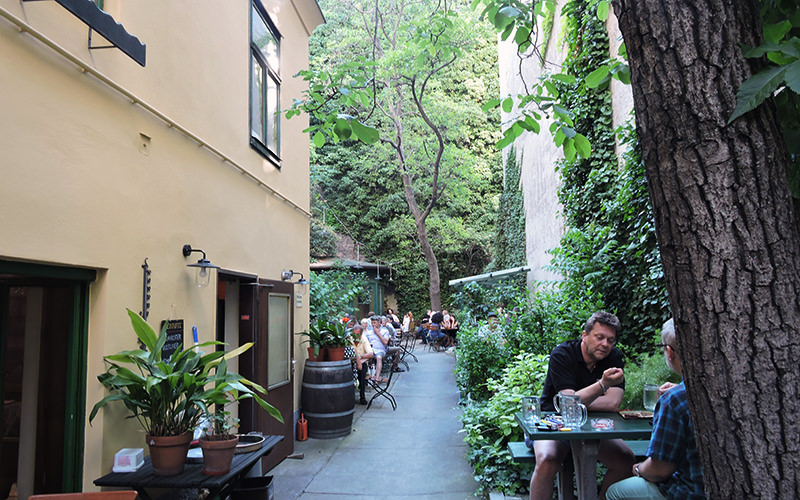
If we look at Vienna’s urban vineyards as the farms in the now familiar farm-to-table construction, it is an eighteenth century royal decree that created the tables that still exist today, the city’s hundred or so heurigen (wine taverns). A heuriger is a place where Viennese winemakers, as permitted under the 230-year-old decree, can sell their young wines, along with a limited selection of food, typically offered up at a self-service buffet. The farm-to-table movement has many objectives, but at its core, the idea is to support local, sustainable agriculture. Vienna’s urban winemakers have been doing just that, playing the role of both farm and table – since 1784. It doesn’t hurt that the typical heuriger is beautiful, the sort of urban oasis where you find yourself saying, “I’ll have one more glass,” at least a couple of times.
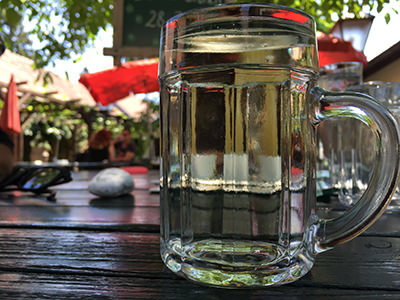 There is one other aspect of the farm-to-table movement that some find difficult to put into words and others deride as wishy-washy bullshit – the difficulty of defining either legally or by common sense what a local product actually is. When it comes to Viennese wine served in a heuriger, where the farm and the table share a common owner – the winemaker – you would think that the ‘local’ question would be settled. My time in both Vienna’s vineyards and heurigen reminded me, great local products, grown for a local market, will serve that local market but will also inevitably find their way to tables all around the world. Does that export business make those winemakers any less locally minded than those whose wines have rarely, if ever, been sipped outside of the city proper – especially when the winemakers who’ve pushed hardest to get their own city to support its local wines are the very ones whose wines are finding a global audience?
There is one other aspect of the farm-to-table movement that some find difficult to put into words and others deride as wishy-washy bullshit – the difficulty of defining either legally or by common sense what a local product actually is. When it comes to Viennese wine served in a heuriger, where the farm and the table share a common owner – the winemaker – you would think that the ‘local’ question would be settled. My time in both Vienna’s vineyards and heurigen reminded me, great local products, grown for a local market, will serve that local market but will also inevitably find their way to tables all around the world. Does that export business make those winemakers any less locally minded than those whose wines have rarely, if ever, been sipped outside of the city proper – especially when the winemakers who’ve pushed hardest to get their own city to support its local wines are the very ones whose wines are finding a global audience?
For now these are questions that don’t need answers as the majority of Vienna-grown wines remain in Vienna, served in the city’s heurigen, to be drunk by locals and tourists alike. Whether you’re in a heuriger belonging to an internationally revered winemaker, or one hidden in an ivy-covered courtyard you reach through an actual hole in a wall where the wine spritzer is the best drink on the menu, there’s that final, often elusive aspect of farm-to-table that you experience in both – the local harmony of growth, production, and consumption – a feeling that’s a whole lot easier to define with one of those perfectly specific German words, Gemütlichkeit.
Gemütlichkeit describes a space or state of warmth, friendliness, and good cheer. Other qualities include coziness, peace of mind, belonging, well being, and social acceptance. The term is most commonly associated with the tenor of a German beer garden. — Wikipedia
For over a quarter century the farm-to-table movement has been a positive force in reshaping how we think about how the food we eat makes it onto our plates. When it comes to what we drink, the last ten years have also brought about sweeping changes. Thousands of craft breweries have opened in the U.S., completely redefining what it means for tens of millions of Americans to drink beer locally (it should be noted the macro-giants operate monstrous breweries in multiple states so their products are actually often more ‘local’ than that IPA you bought from the other side of the continent).
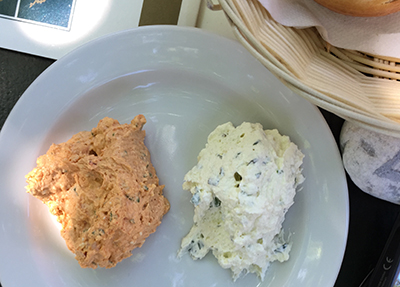
The same cannot be said for wine – for most of us here in America at least. While we grow wine all across the U.S., the vast majority of our wine grapes are grown in California. The state accounts for nearly nine out of ten bottles of wine produced in America, with Washington, New York, Oregon and Texas making up most of the rest. If you’re lucky enough to live in one of those states, whether you choose to drink locally or not, you do have the option.
What ‘local’ actually means is its own contentious debate – 100, 200, 400 miles from point of production to where consumption happens – not accounting for where the ingredients came from. This reality is hardly unique to the U.S., though there is a good bit of truth to the stereotype that the Bordelais drink Bordeaux, Burgundians drink Burgundy, and so on and so on. The local loyalty of the French aside, the truth is that just being local isn’t good enough for a product to succeed, not when winemakers, brewers and other local producers of food and goods are fighting in a global market. Being local isn’t enough. Quality matters.
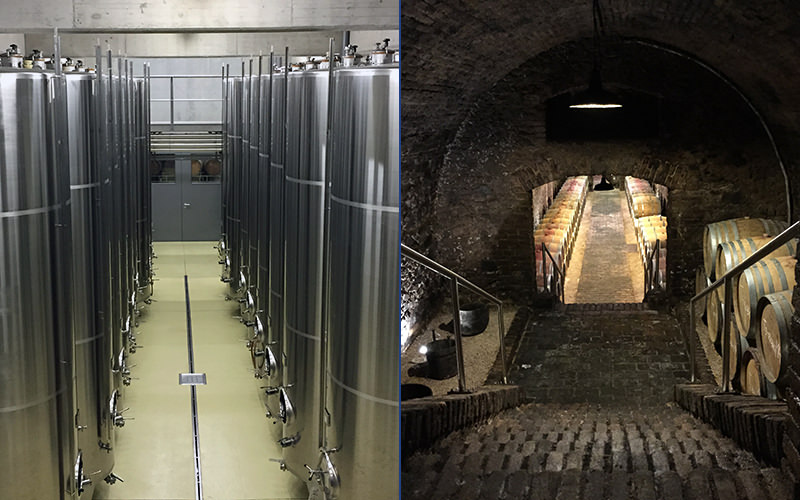
Vienna’s vineyards were able to survive when other urban vineyards throughout Europe were being uprooted due to two laws. The first was a royal decree issued by Joseph II, the third to last Holy Roman Emperor, on August 17, 1784, which allowed the city’s winemakers to sell the wines from their most recent vintage in their own taverns, along with a limited selection of foods – the equivalent of modern-day wine bars. These family-run establishments, often passed down through the generations, were further protected at the turn of the twentieth century when Vienna’s then-mayor, Karl Lueger, banned development in the hilly forests and fields that ring the central city.
Over time the restrictions on the wine and the food served at the city’s heurigen have been relaxed, but the spirit remains. Young wine, often Grüner Veltliner, is served in large glasses and mugs, mixed with soda water. Gemischter Satz, a field blend of white grape varieties, is also commonly available – a dry, fruity wine Vienna was once famous for, then looked down upon for, which is now going through a renaissance. Food is available at a self-service buffet. The items will vary but you will almost always find Liptauer, a deliciously spicy cheese spread. Today some heuriger are large, seating hundreds, and open year round. Others are tiny, hidden away in the outskirts of the city, and deeply traditional, opening only for a few weeks in the late fall, following the harvest.
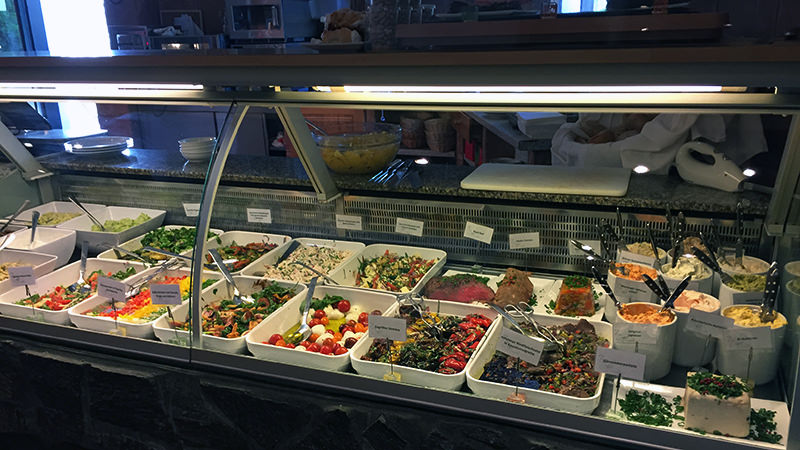
Historic laws saved Vienna’s vineyards, but by the 1980s, quality had declined. Fritz Wieninger, the fourth-generation winemaker and owner of Weingut Wieninger, was a key member of a small group who set out to restore the reputation of the city’s vineyards. 1987 was his first vintage, and while he could and did sell the wine he was making at the family heuriger – operated by his brother in the house in which they grew up – he had a different long-term goal:
Viennese wine at that time was not very popular. Most of the sommeliers and restaurant owners said well, Viennese wine you should keep it at the heuriger. When a customer comes and asks for Viennese wine, we tell them to go to the heuriger, we don’t need that.
To restore the reputation of the city’s wines, he realized that it didn’t matter what sort of wine he turned out, rallying local support for local wine would require a group effort, and more than that, a unique identity. Fritz and other like-minded winemakers eventually realized that Gemischter Satz, despite its poor reputation, would be the identity they were looking for. This was once the wine of Vienna, at times revered throughout the Austrian Empire. By the early twentieth century, though, Fritz explains that things “came a little bit off the tracks. The universities – or the wine colleges – said it’s not good to have different grape varieties in one vineyard. Monovarietal is the future. This is more for the market. This is more for the spraying. This is the future.”
Following the advice of these experts, “many, many [winemakers ] replaced Gemischter Satz vineyards all over Austria with Grüner Veltliner or Pinot Blanc or Chardonnay or Riesling and so on.”
Fritz himself didn’t believe one could make quality Gemischter Satz, and for his first decade of winemaking he didn’t attempt to. Winemakers – now deceased – who he considered father figures, tried to convince him otherwise, men like Franz Meyer, from Mayer am Pfarrplatz.
They always tried to convince me on Gemischter Satz. They said this is our identity and this is our history. Viennese wine is Gemischter Satz.
Finally in 1999, Fritz purchased a vineyard on the other bank of the Danube River, in Nußberg, the city’s nineteenth district. He made the leap with an eye to the past, and a hunch about the future, explaining he had “read about the beauty of these vineyard sites,” and thought there was something special about the terroir, given “the glory of those wines [produced there historically].”
He wanted to see what the land could do firsthand, so after some searching, he found and purchased a vineyard in 1999. The vineyard was a very old Gemischter Satz vineyard, with nine different grape varieties planted. When he bottled his first wine from the vineyard, the results exceeded his expectations. He realized when he first tasted the wine that “these old guys, they were right. They were still alive at that time. I called them and said, ‘Hey I have a Gemischter Satz now and you’re right. Thank you for telling me all the time.’ I understood in this moment Gemischter Satz can be something really great.”
While Fritz was elated, and believed he had found the wine that Vienna could rally around, he knew he had a branding problem, wondering “who will buy it? Because the image of Gemischter Satz was extremely bad. It was more like I invite you for a glass of Gemischter Satz. Oh really? Don’t you like me?”
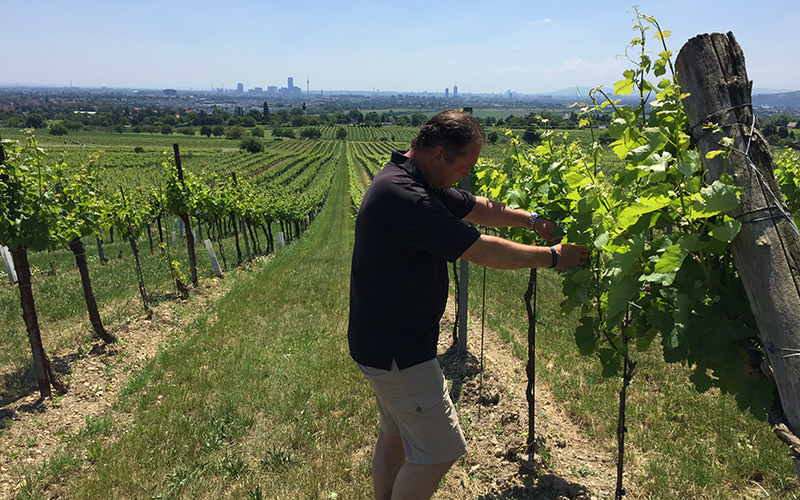
Local Isn’t Good Enough. Good Isn’t Good Enough.
As Fritz readily admits, it took him over a decade of prodding and cajoling from fellow winemakers to even grow Gemischter Satz himself. He laughs about it now, but the wine’s image was so poor at the time, that when he bottled his first vintage he included as little information as possible on the label, just Nußberg Alte Reben (the name of the vineyard and the German phrase for ‘old vines’). The wine was a success, but this wasn’t a sustainable strategy. What was needed, he realized, was to band together with other winemakers who were producing quality Gemischter Satz. In 2006, he and three other winemakers formed WienWein, with the goal of promoting Gemischter Satz as a uniquely Viennese wine.
What was very important was that it wasn’t one winery alone. It was suddenly a group of wineries and we talked to newspapers as long as they would write about it. If you have a group then you can make an image for a region. One person alone cannot make an image for a region – that’s impossible.
Banding together was the first step to getting Vienna to take pride in its local wine. What followed was hard work and grassroots marketing. The group of four winemakers (now six), literally went door to door, taking their product to “key restaurants with good names, with good reputations, where we knew that the right people would go there and later on talk about that.” They offered deep discounts to those restaurants if they agreed to pour Gemischter Satz by the glass. They spoke to the local press whenever the opportunity arose. They created their own growing rules so that Viennese drinkers could feel confident about what was in their glasses: “Then we wrote Gemischter Satz on the label, and it became more and more successful. We convinced the people by the constantly good quality and of course constantly talking about it – this is the most authentic Viennese wine – ah ok, give me a taste…wow, this is not so bad. Let’s try it.”
The relentless focus on quality, mutual support, and a marketing program built around Gemischter Satz’s very real local history worked. In 2013, with Gemischter Satz’s reputation restored, those self-imposed rules were turned into law, as the Austrian government created the Wiener Gemischter Satz DAC appellation, the country’s ninth.
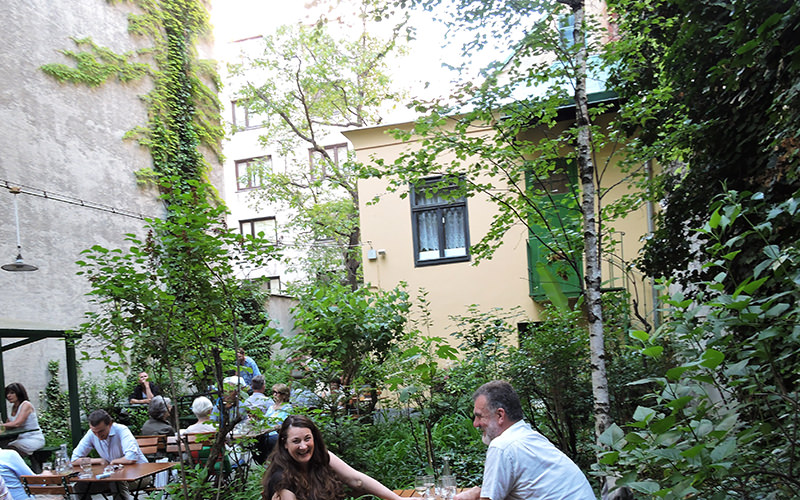
The Challenges Of Growing Wine In A City
Gemischter Satz’s reputation has been restored, giving Vienna a truly local wine, one that is made locally, and consumed locally. At the same time exports have soared. While these efforts haven’t been accidental – WienWein have worked just as hard to build up an international reputation for Vienna’s wines – you can still enjoy these wines in family owned heurigen, in the city, yet only minutes from the vineyards where they were grown.
Forward-thinking land use regulations have allowed Vienna’s urban vineyards to persevere, but that doesn’t mean growing wine in a city – a European capital home to 1.8 million people – is easy. You can legislate that anyone who buys a vineyard must continue to work that land as a vineyard. You cannot legislate away neighbors. Weingut Wieninger follows biodynamic principles. As Fritz laments, when he sprays his vines at night, “that’s pretty loud and when that’s like four in the morning I don’t have many friends.” There’s also the smell, a unique case of NIMBY-ism: “When you produce compost it stinks and everybody wants organic and nature, but nature is not allowed to smell.”
Air pollution isn’t a problem for the city’s winemakers, as Vienna is a relatively clean city, situated at the easternmost reaches of the Alps. It’s geographic position gives rise to strong winds that keep the air cleaner than you would expect. Every winegrowing region has its own challenges – from hail to frost to fungus – Vienna’s are just a bit different than the norm.
When you produce compost it stinks and everybody wants organic and nature, but nature is not allowed to smell.
Neighbors can be a hassle, but many vineyards have neighbors. The true threat to the city’s vineyards is the same force that you’ll find in London, New York, San Francisco and any other major city. Real estate development. For now, laws exist to prevent the city’s vineyards from being uprooted and built over, but as you can see when standing in the vineyards of Nussberg, the view is stunning. When I asked Fritz about the future, at first he simply offered that “there’s a lot of real estate pressure.”
I asked him if the laws and regulations in place were enough to ensure the sustainability of the vineyards. His answer was unique to Vienna, but change a phrase or two and suddenly Knightsbridge, London and New York’s newly-minted Billionaire’s Row spring to mind:
“You can buy a vineyard, anybody can buy a vineyard, you don’t have to be a farm person. Even a Russian investor can come with a bag of money and buy a vineyard. BUT. You cannot build a house there. It’s not allowed. And in the meantime it’s even necessary that you take care of the vineyard. You cannot get rid of the vineyard and plant trees for example, or make regular agriculture. You have one vineyard, then by the law, by the newest law, you have to take care of the vineyard or you have to rent it to somebody who takes care of it.
“I care a lot about the vineyards. This is very important to me, that this is saved for the future. I know that a lot of these vineyard sites would be fantastic for building luxury homes, residential areas, because you have a fantastic view down to the city, and it would be really nice to live up there. But as soon as we allow that, vineyards transformed into housing areas, then this land never will be available for wine production anymore, and we will lose a very important part of Viennese identity.”
